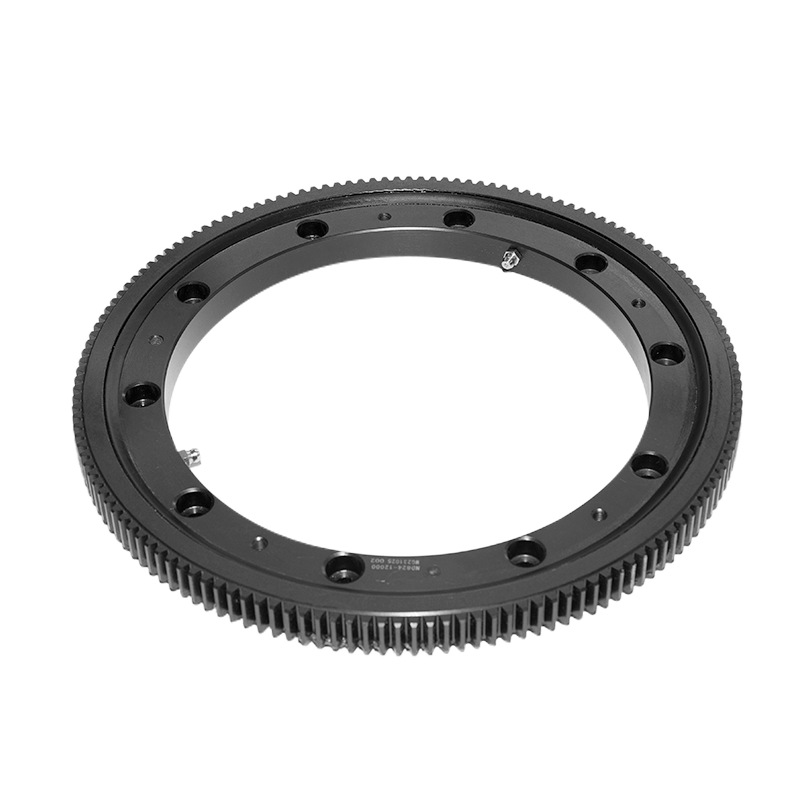How to consider the load capacity of SINGLE-ROW BALL SLEWING BEARING in terms of safety factor?
 2024.09.06
2024.09.06
 Industry news
Industry news
When considering the load capacity of a single-row ball slewing bearing, the safety factor is a very important part that can provide higher reliability and safety for the design of the slewing bearing. The following is a detailed explanation of how to apply the safety factor in the load capacity problem:
The safety factor refers to the ratio between the load capacity and the actual operating load during design and selection. It is used to ensure that the slewing bearing can withstand unexpected overloads or extreme working conditions.
The size of the safety factor depends on the working environment of the equipment, the type of load, the operating conditions, and the importance of the equipment. The following is the recommended safety factor range under different working conditions:
Light load applications (such as light industrial equipment): 1.2 to 1.5 times
Medium load applications (such as construction machinery, conveying equipment): 1.5 to 2.0 times
Heavy load applications (such as cranes, tower cranes, wind power generation equipment): 2.0 to 3.0 times
Extreme environments or high safety requirements (such as offshore platforms, military equipment): 3.0 times or moreIn practical applications, not only static loads but also dynamic loads should be considered, including instantaneous impact loads and long-term fatigue loads. Therefore, the safety factor usually needs to be higher under dynamic load conditions to cope with load changes or uncertain factors.
If the bearing mainly bears axial loads, a smaller safety factor can usually be used because this type of load is relatively stable. If the radial load or overturning moment is large, it is recommended to select a higher safety factor. Especially in the case of eccentric loads or uneven loads, the single-row ball slewing bearing may be locally overloaded, so a higher safety factor is more necessary.
The safety factor directly affects the service life of the slewing bearing. A larger safety factor not only helps to avoid instantaneous overload damage, but also extends the fatigue life of the balls and raceways. Fatigue life calculations are usually performed using equivalent loads. The larger the safety factor, the lower the equivalent load, which extends the service life.

Manufacturing errors and installation errors of slewing bearings can also affect their load-bearing capacity. For example, uneven mounting surfaces and misaligned mounting holes can lead to uneven load distribution, which may cause overloading in certain areas. For this reason, it is usually necessary to reserve a larger safety factor to compensate for possible errors.
When slewing bearings are used in high or low temperature or corrosive environments, the properties of the materials will change, affecting their load capacity. These environmental factors should also be addressed by appropriately increasing the safety factor.
For example, in the field of cranes and construction machinery, a safety factor of 2.0-2.5 is often selected, considering that the equipment often works under harsh conditions and may be subjected to impact loads. In wind power generation equipment, the safety factor can reach 3.0 or even higher due to the requirement for long-term stable operation.
Even with an appropriate safety factor, slewing bearings still require regular inspection and maintenance. Lubrication, cleaning and detection of raceway wear can detect problems in time, and adjust the safety factor or service life expectation according to the actual wear conditions.
The safety factor is a key factor to ensure the reliable operation of the single-row ball slewing bearing under complex working conditions. When selecting and designing, a comprehensive assessment should be made based on the working conditions, load type, environment and equipment importance, and an appropriate safety factor should be selected to ensure the safety and long-term use of the slewing bearing.












